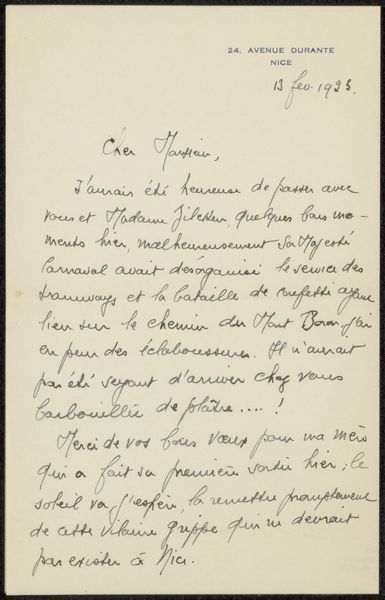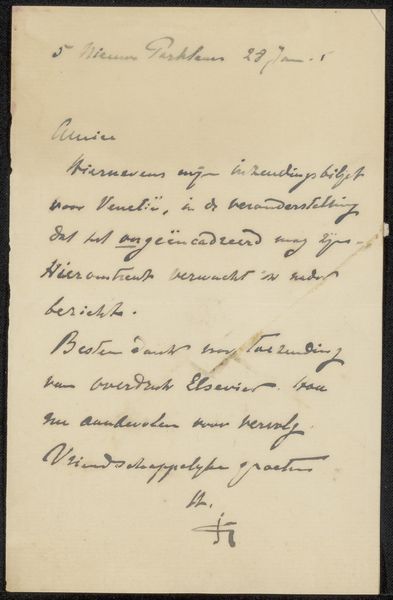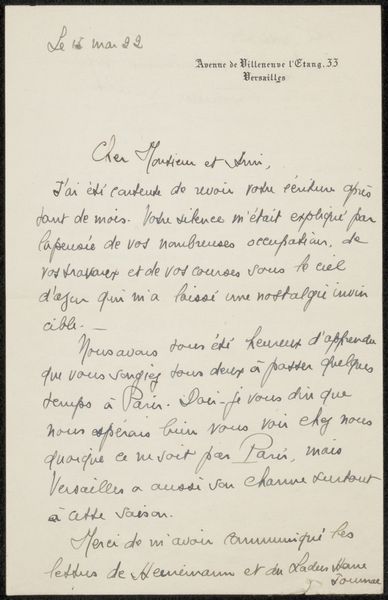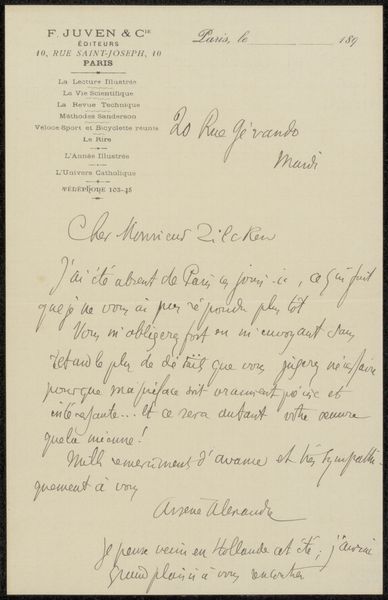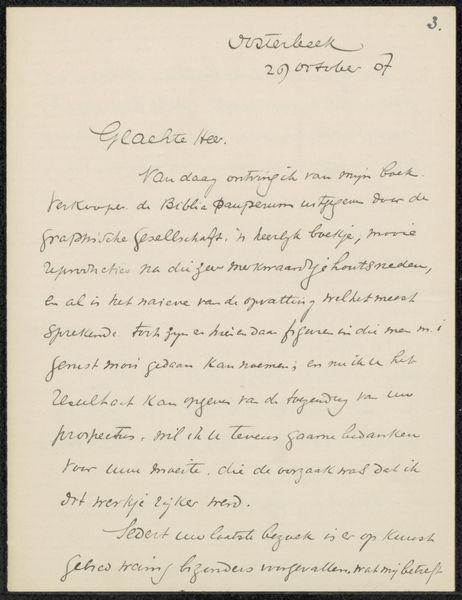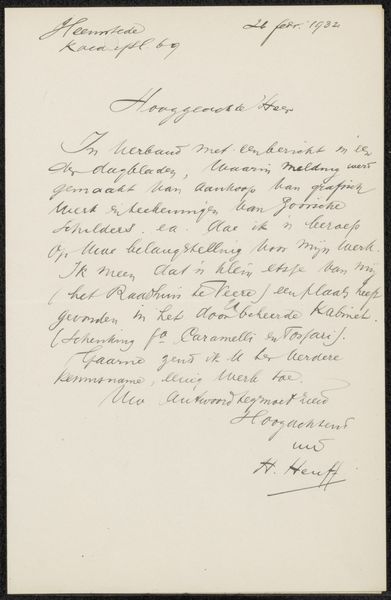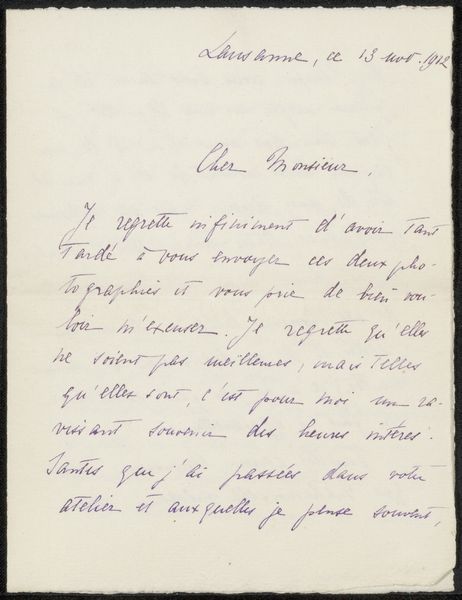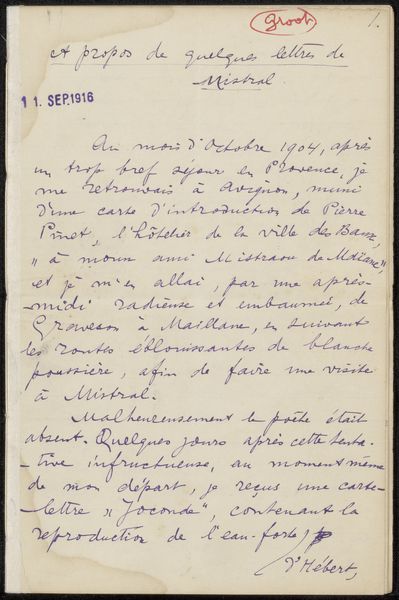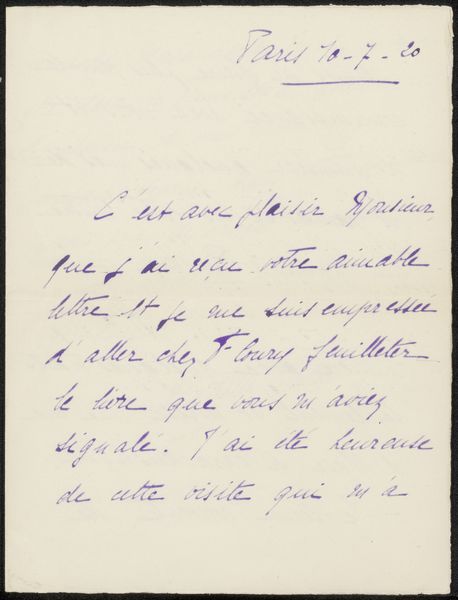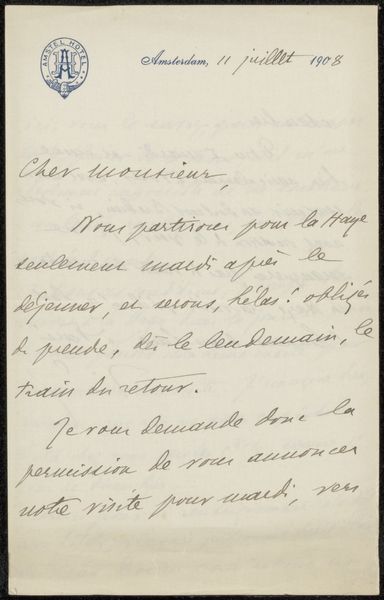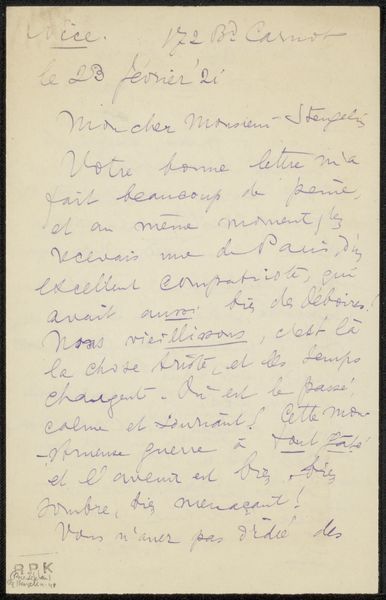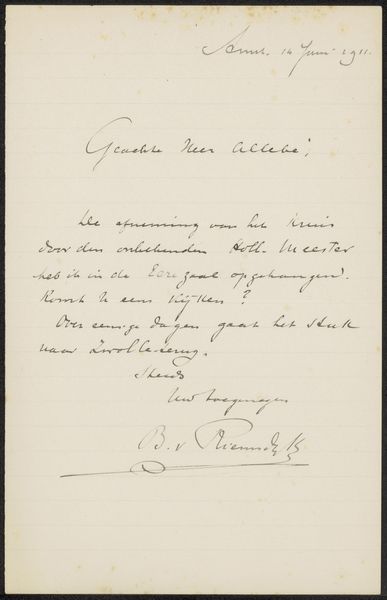
drawing, mixed-media, paper, ink, pen
#
drawing
#
type repetition
#
comic strip sketch
#
mixed-media
#
script typography
#
hand-lettering
#
ink paper printed
#
hand drawn type
#
feminine typography
#
hand lettering
#
paper
#
ink
#
hand-drawn typeface
#
pen
#
coloring book page
#
modernism
Copyright: Rijks Museum: Open Domain
Curator: This work, entitled "Brief aan Francoise W.M. Bonger," is rendered in ink, likely with a pen, on paper. The letter is presumed to have been produced around 1939. My first impression is its immediacy and the intimacy conveyed by handwriting. It feels very personal. Editor: Indeed. Let's think about the material conditions that inform this seeming simplicity. It's more than just ink on paper; it's the confluence of the physical tools—pen, ink, and paper—and the intellectual labor invested by the writer. Who was Francoise W.M. Bonger and what importance did she hold to warrant an exchange that involved these crafted instruments? Curator: That’s key. Françoise Bonger was the widow of Theo van Gogh. This letter likely concerns the dissemination of information about Vincent van Gogh after his death. Editor: So the letter becomes part of a chain of production, influencing public perceptions. The very act of writing, of producing this text by hand rather than, say, dictating it, speaks to a certain craft, a dedication to the message itself. Curator: Precisely. This work connects directly to narratives of identity and cultural memory, gender, and how history is carefully written by hand and also mass-produced. It prompts us to consider what it meant to physically craft a message in this moment, possibly wartime, versus mechanized means. It adds a layer of authenticity or intent. Editor: What kind of social agency does this letter exert in determining an understanding of the late artist's body of work? The production process in that case seems deeply interwoven. Curator: That question opens up so much, doesn't it? It invites us to consider this artifact as not just a text, but an intersection of personal history and social forces at a turning point in time. Editor: Absolutely. It's through engaging with this web of relationships—the author, the recipient, the subject, and the object itself—that a material understanding truly illuminates both process and meaning. Curator: Analyzing “Brief aan Francoise W.M. Bonger” reminds us that even seemingly simple objects hold powerful insights when we examine their relationship to social, cultural, and artistic narratives. Editor: Agreed. There's so much information embedded in such commonplace formats. Materiality offers the chance to trace the physical conditions behind such moments, revealing unseen relations that make visual artworks what they are.
Comments
No comments
Be the first to comment and join the conversation on the ultimate creative platform.
